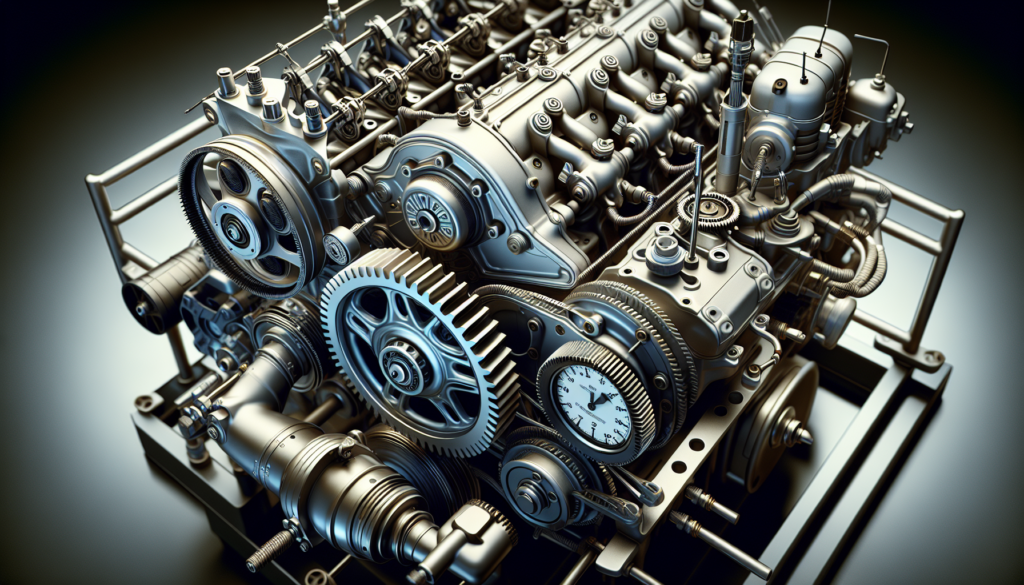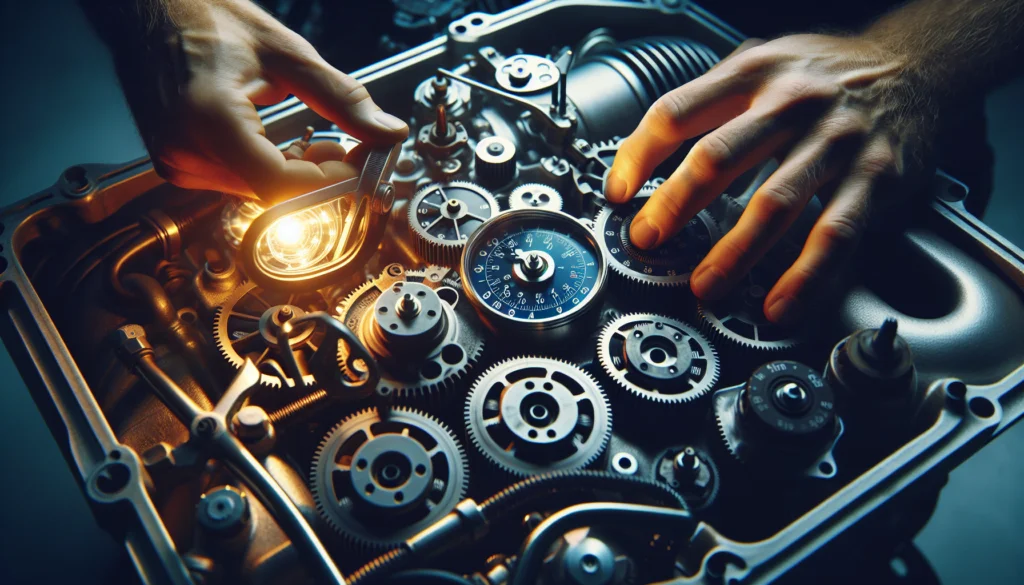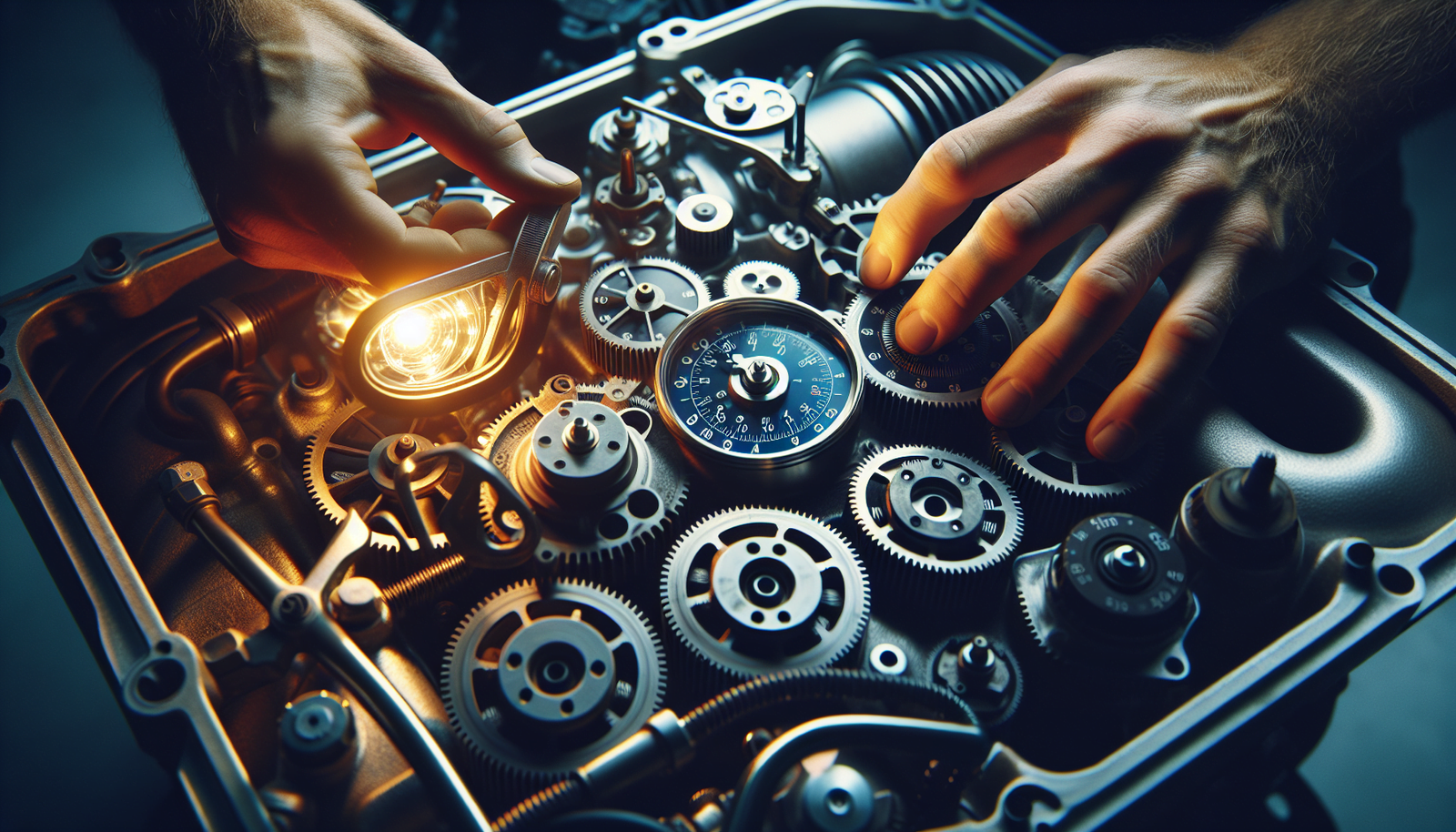Navigating the vast blue sea in your adventurous boat can be a thrilling escapade – unless, your boat engine decides to misbehave. You are about to embark on an enlightening journey, learning how to keep an impeccable tempo with nature’s rhythmic waves by ensuring your boat engine’s timing is always on point. The piece ‘How To Check and Adjust Your Boat Engine’s Timing’ navigates you through the process of inspecting and fine-tuning your boat’s engine, empowering you to continue your marine adventures without any disruptions. From step-by-step procedural guidance to helpful tips, your sail through this piece promises land you in a safe harbor of knowledge.

Understanding Boat Engine Timing
While managing boat engines might seem like a task left to professionals, it’s possible for boat owners to handle their own engine maintenance, especially when it comes to engine timing. Understanding the intricacies of boat engine timing helps to keep a boat running smoothly and extends its life.
Definition of Boat Engine Timing
Boat engine timing refers to the synchronization between the engine’s camshaft, crankshaft, and the firing of the engine’s spark plugs. When the timing of these components aligns correctly, combustion occurs at the optimal time, leading to efficient functioning of the engine.
Importance of Correct Boat Engine Timing
The correct boat engine timing ensures the optimal performance of your boat. It also reduces fuel consumption, leading to cost savings. Additionally, appropriate timing helps prevent unnecessary wear and tear on the engine, extending the boat’s life. Most importantly, it keeps you and your boat safe while on the water.
Symptoms of Incorrect Boat Engine Timing
When the boat engine timing goes awry, the effects can be noticeable. You might experience difficult starting or unreliable performance. In some cases, the engine can misfire, or the boat may consume more fuel than usual. Other symptoms include poor acceleration, high emissions, and over time, potential engine damage.
Tools Needed for Checking and Adjusting Timing
Making adjustments to your boat’s engine timing requires the use of certain tools.
Using a Timing Light
A timing light is an essential tool in this process. Timing lights are used to verify the ignition timing of the crankshaft in relation to the engine’s camshaft, thereby ensuring optimal performance.
Other Necessary Tools and Equipment
Aside from the timing light, you may need a variety of other tools, including a wrench or socket set for adjustments, safety goggles, mechanic’s gloves, and a notebook and pen to keep track of your readings and adjustments.
Importance of Proper Tools
Having the right tools at your disposal can make the process of checking and adjusting your boat’s engine timing much easier and safe. Proper tools provide accurate measurements, allowing you to make precise adjustments.
Accessing Your Boat’s Engine
A key first step in managing your boat engine’s timing is to find and access the engine.
Locating the Engine
Most boat engines are located beneath the main deck, under a hatch or hood. Be familiar with your boat’s layout to find the engine quickly and easily.
Safety Precautions When Working on Boat Engines
Before you start working on an engine, always prioritize your safety. Wear safety goggles to protect your eyes, gloves to shield your hands, and appropriate footwear to prevent accidents. Always make sure the engine is off and has cooled down before starting to work on it.
Preparing the Engine for Inspection
Once you’ve found the engine and donned your safety gear, prepare the engine for inspection. This may involve cleaning any grime or dirt from the engine and ensuring that moving parts are well-lubricated.

Identifying Your Boat Engine’s Timing Marks
Before you can adjust the timing, you need to be able to identify the engine’s timing marks.
Understanding Timing Marks
Timing marks are physical indicators found on the engine, used to set the ignition timing correctly. These marks represent the position of the engine’s pistons in their cycle, allowing you to determine and adjust the timing.
Locating Timing Marks on Different Engine Types
The location of timing marks can vary, depending on the type of engine. They are usually found on the engine’s crankshaft pulley or flywheel.
Interpreting Timing Mark Readings
Interpreting these marks can be a bit tricky. The key is to understand that the scale represents degrees of crankshaft rotation. When the piston reaches the top of its compression stroke, this is known as top dead center (TDC) and it is usually designated as 0 on the timing scale. More advanced readings will be represented by larger numbers on the scale.
Performing a Timing Check
After identifying your boat engine’s timing marks, the next step is performing a timing check.
Connecting the Timing Light
The timing light has three cables to connect: one to the battery, another to the engine ground, and the last one to the number one spark plug.
Starting the Engine to Observe Timing
Start the engine and let it idle, pointing the timing light at the timing marks. The strobe light should illuminate the timing mark on the harmonic balancer or flywheel.
Understanding Your Timing Light Reading
The timing light will make it appear as if the timing mark is stationary. Compare this reading to the timing specifications of your engine. If they match, no adjustment is necessary, if not, you’ll need to adjust your engine’s timing.
Adjusting Your Boat Engine’s Timing
If your boat engine’s timing requires adjusting, it’s important to follow the right steps.
When to Adjust your Engine Timing
You should adjust your engine timing whenever your timing check reveals variations from the engine’s specifications. Repeated checks at regular intervals can help prevent issues before they become problems.
Steps for Adjusting Timing
To adjust the timing, you’ll first need to loosen the distributor hold-down bolt, then rotate the distributor slowly to adjust the timing. Use your timing light to check the current setting and make small adjustments as necessary.
Re-checking the Timing After Adjustments
After adjusting, always recheck the timing. Retighten the distributor hold down clamp and ensure that the new setting remains.
Common Problems When Checking and Adjusting Timing
Checking and adjusting engine timing can sometimes present challenges.
Diagnosing Common Timing Issues
Some common timing issues include the timing advancing too far, causing the engine to knock, or not advancing enough, which can cause the engine to run poorly.
Troubleshooting Timing Light Problems
If your timing light isn’t working properly, it could be a problem with one of the cables or connections. Always ensure all the cables are connected correctly and that the timing light is functioning as expected.
Handling Difficult Adjustments
Sometimes adjusting the distributor can be tough. Always remember to loosen the holding bolt enough to allow for rotation but not so much that it’s loose. If the distributor is stuck, try to free it up with some penetrant.
Special Considerations for Different Types of Boat Engines
Different engine types may have different timing considerations.
Timing Adjustments for Two-Stroke vs. Four-Stroke Engines
Two-stroke engines have a simpler design, meaning the timing of two-stroke engines can be easier to adjust than their four-stroke counterparts. However, each engine can present its challenges.
Working with Older Boat Engines
Older boat engines can require added finesse due to worn parts, rust, or lack of technology. Adjusting the timing on an older engine often requires more time and patience.
Considerations for High-Performance Engines
Adjusting the timing on high-performance engines can be complex due to more advanced ignition systems. These engines are often finely-tuned machines that require precise adjustments.
Maintaining Your Boat’s Engine Timing
Keeping your boat engine’s timing in check benefits its overall performance.
Routine Timing Checks
Perform routine timing checks to ensure your boat’s engine maintains optimal performance. Regular checks can help catch any issues before they become significant problems.
Scheduling Professional Timing Inspections
Although you can do a lot of the timing work yourself, it’s a good idea to schedule professional inspections every once in a while. A trained professional can offer a comprehensive inspection and identify issues that you might miss.
How to Extend the Life of Your Engine Through Proper Timing
Maintaining proper timing extends the life of your engine. A well-timed engine reduces wear and tear, enhances fuel efficiency, and maintains optimal performance.
Concluding Thoughts on Boat Engine Timing
Boat engine timing, while complicated, plays a vital role in your boat’s performance.
The Complexity and Importance of Engine Timing
The task’s complexity may seem daunting, but understanding and managing your boat’s engine timing is crucial for the health of the boat.
Debunking Common Timing Myths
There are many myths surrounding timing, like the idea that timing never needs to be adjusted once it’s set. In truth, regular checks and adjustments can ensure peak engine performance.
Ensuring the Longevity of Your Boat’s Engine Through Proper Timing
Proper timing is key to ensuring the longevity of your boat’s engine. Regular timing checks and adjustments can help maintain a healthier and longer-lasting boat engine, ensuring many more happy days out on the water.

